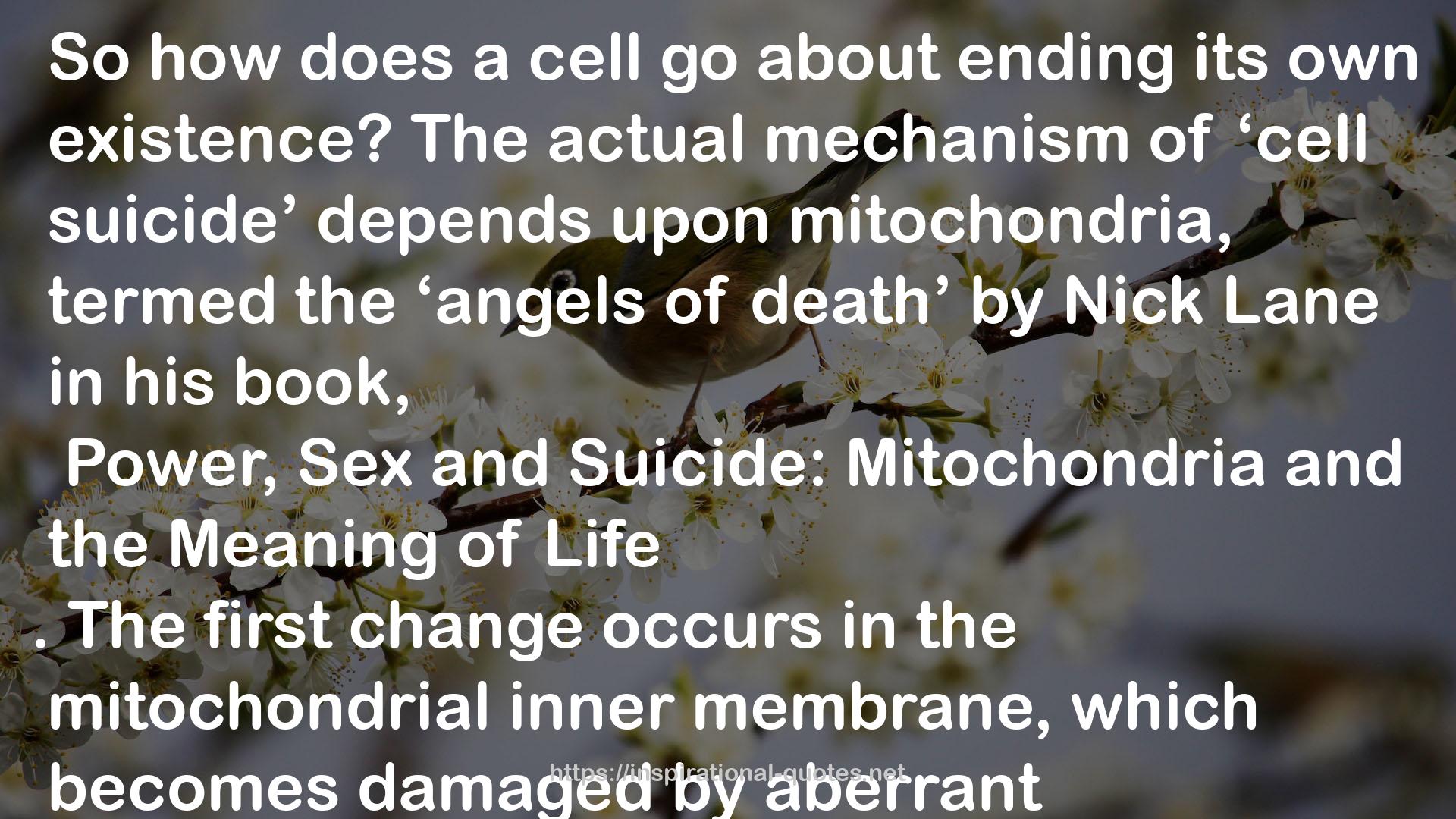" So how does a cell go about ending its own existence? The actual mechanism of ‘cell suicide’ depends upon mitochondria, termed the ‘angels of death’ by Nick Lane in his book,
Power, Sex and Suicide: Mitochondria and the Meaning of Life
. The first change occurs in the mitochondrial inner membrane, which becomes damaged by aberrant biochemical activity, leading to the formation of pores in the mitochondrial membrane (Figure 12b, d). At this point, the mitochondrion becomes committed to trigger apoptosis, and releases cytochrome c (a protein crucial to its normal function of energy production) which exits through the newly formed pores. This information came to light as a result of some neat experiments in which apoptotic mitochondria were introduced into perfectly healthy cells, resulting in apoptosis. The released cytochrome c binds to several other proteins in the cytoplasm to form a complex called the apoptosome which, in turn, activates a cascade of ‘executioner enzymes’ which not only kill the cell but cause fragmentation of the nucleus and cytoplasm into bite-size pieces ready to be phagocytosed by neighbouring cells. "
― , The Cell: A Very Short Introduction
Image for Quotes

Nick Lane in his book,
Power, Sex and Suicide: Mitochondria and the Meaning of Life
. The first change occurs in the mitochondrial inner membrane, which becomes damaged by aberrant biochemical activity, leading to the formation of pores in the mitochondrial membrane (Figure 12b, d). At this point, the mitochondrion becomes committed to trigger apoptosis, and releases cytochrome
c (a protein crucial to its normal function of energy production) which exits through the newly formed pores. This information came to light as a result of some neat experiments in which apoptotic mitochondria were introduced into perfectly healthy cells, resulting in apoptosis. The released cytochrome
c binds to several other proteins in the cytoplasm to form a complex called the apoptosome which, in turn, activates a cascade of ‘executioner enzymes’ which not only kill the cell but cause fragmentation of the nucleus and cytoplasm into bite-size pieces ready to be phagocytosed by neighbouring cells." style="width:100%;margin:20px 0;"/>
 Nick Lane in his book,
Power, Sex and Suicide: Mitochondria and the Meaning of Life
. The first change occurs in the mitochondrial inner membrane, which becomes damaged by aberrant biochemical activity, leading to the formation of pores in the mitochondrial membrane (Figure 12b, d). At this point, the mitochondrion becomes committed to trigger apoptosis, and releases cytochrome c (a protein crucial to its normal function of energy production) which exits through the newly formed pores. This information came to light as a result of some neat experiments in which apoptotic mitochondria were introduced into perfectly healthy cells, resulting in apoptosis. The released cytochrome c binds to several other proteins in the cytoplasm to form a complex called the apoptosome which, in turn, activates a cascade of ‘executioner enzymes’ which not only kill the cell but cause fragmentation of the nucleus and cytoplasm into bite-size pieces ready to be phagocytosed by neighbouring cells." style="width:100%;margin:20px 0;"/>
Nick Lane in his book,
Power, Sex and Suicide: Mitochondria and the Meaning of Life
. The first change occurs in the mitochondrial inner membrane, which becomes damaged by aberrant biochemical activity, leading to the formation of pores in the mitochondrial membrane (Figure 12b, d). At this point, the mitochondrion becomes committed to trigger apoptosis, and releases cytochrome c (a protein crucial to its normal function of energy production) which exits through the newly formed pores. This information came to light as a result of some neat experiments in which apoptotic mitochondria were introduced into perfectly healthy cells, resulting in apoptosis. The released cytochrome c binds to several other proteins in the cytoplasm to form a complex called the apoptosome which, in turn, activates a cascade of ‘executioner enzymes’ which not only kill the cell but cause fragmentation of the nucleus and cytoplasm into bite-size pieces ready to be phagocytosed by neighbouring cells." style="width:100%;margin:20px 0;"/>